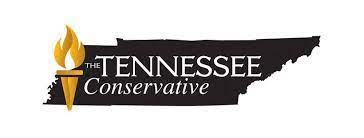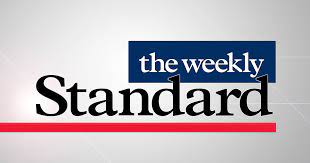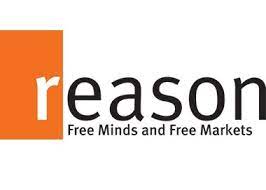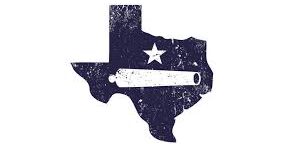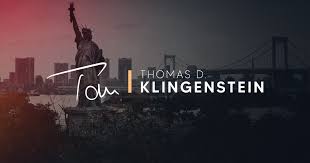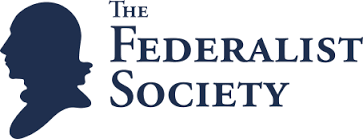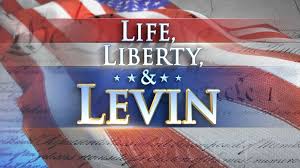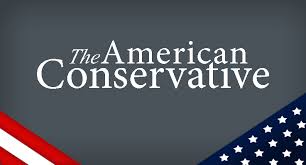California and Texas: The Blue and the Red?
Sibling Rivalry, Competing Archetypes, or False Dichotomy?
When comparing California and Texas, the only criterion that matters is how people are voting with their feet. California loses decisively, but some academics insist otherwise.
This essay originally appeared in Law & Liberty on September 10, 2021 (here). Thanks to Instapundit (here and here), SE Texas Record (here), Real Clear Books, and Real Clear Policy (here)!

As someone who lived in California and Texas for nearly my entire adult life, I read Kenneth P. Miller’s new book, Texas vs. California (2020), with considerable anticipation. Miller, a California native who currently heads the Rose Institute of State and Local Government at Claremont McKenna College in the Golden State, clearly aimed to write a “big book” on the parallels and differences between California and Texas, and in many respects he succeeded. Texas vs. California is an impressive tome, boasting 259 pages of dense text and over 100 pages of end notes, bibliography, and indices. Brimming with tables and graphs, the book is an admirably-thorough (if at times wonky) compilation of data about the two states: history, culture, economics, demographics, and politics. Readers expect no less from the Oxford University Press.
Miller aims even higher, using the analogy of “sibling rivals” to plumb the meaning of the numerous differences between the two states, hoping to divine from them some insight into the “future of America.” Here, in my estimation, the book falls short. Miller convincingly presents the many common features shared by California and Texas—large, populous border states with strikingly similar demographics, both acquired from Mexico in military conflicts (the Texas Revolution and the Mexican-American War, respectively), and which joined the union as states in the mid-nineteenth century. Readers unaware of these parallels will marvel at how two states with such common origins evolved so differently. Or did they? Here, Miller’s interpretation of the data, to support his overarching theme, is sometimes debatable.
Certainly, California and Texas have dramatically different “stories,” but the same is true for each of the 50 states. Miller does a workmanlike job of documenting the differences. Texas, settled by farmers, was a slave state that seceded from the union, struggled through Reconstruction, and for many decades in the 20th century was largely rural and dependent on the cyclical oil industry. The more geographically-remote California, settled initially by gold-seekers, was admitted as a free state, became transformed by completion of the Transcontinental Railroad in 1869, and during the 20th century exploded in population, growing from 1.5 million residents in 1900 to 34 million in 2000. California’s population skyrocketed after WWII. Texas’s trajectory lagged by several decades, but in the 21st century is catching up.
Today, the most obvious difference between the two states is political: Statewide, California voters are lopsidedly Democratic, while Texas has, since 1994, consistently voted Republican statewide. There are other differences, in terms of tax burden, government regulation, and the like, but they are mainly a function of the electorate. Miller diligently sifts through the states’ respective cultures (religiosity, heritage, etc.) to explain the differences, but in his pursuit of an overarching theme he tends to lose sight of the granular details. Neither the political history of California nor that of Texas supports a rigid, unitary analysis. Sweeping pronouncements about political trends must be tempered by the pesky, mundane details of electoral history. Facts matter.
Over its history, California has alternated between electing a Progressive governor, Hiram Johnson, in 1910, and electing Ronald Reagan governor twice, in 1966 and 1970, with everything in between. In 1934, for example, the Democratic Party in California nominated a socialist, Upton Sinclair, as its gubernatorial candidate. (Sinclair lost.) Leftist Jerry Brown succeeded Reagan as Governor, and was then followed by 16 years of conservative Republicans (George Deukmejian and Pete Wilson). California voters enacted property tax limits (Prop. 13), attempted to withhold taxpayer-funded benefits to illegal aliens (Prop. 187), banned affirmative action in state university admissions (Prop. 209), and in 2003 recalled liberal Gov. Gray Davis. This belies the narrative of longstanding liberal hegemony.
Conversely, Miller avers that “Texas has always had a predominately conservative political culture,” despite its embrace of ardent New Dealers such as FDR and LBJ, the Grange movement in the nineteenth century, and liberal Democrats such as Senator Ralph Yarborough, Governor Ann Richards, and, in the late 1970s and 1980s, various activists elected to the Texas Supreme Court. When I moved to Texas in 1977, the state was so thoroughly dominated by Democrats that the diminutive Republican Senator John Tower was a novelty, and the narrow election of Republican Governor Bill Clements in 1978 was regarded as a fluke. (Clements failed to win reelection in 1982.) Prior to the 1990s, Texas was so blue that Rick Perry, who later served as governor for a record 15 years, was first elected to office in 1984 as a Democrat. Today, Texas’s press corps and professoriate are overwhelmingly liberal.
It is difficult to generalize about politics, which vary over time and are often influenced by personalities and external events. Historically, partisan dominance has been cyclical. When I left Texas for California in 1980, California was more reliably Republican than Texas. During my tenure in California, the pattern reversed. In the 1980s, trial lawyers were securing control of the Texas Supreme Court at the same time that California voters were dumping liberal Chief Justice Rose Bird and two of her activist colleagues on the California Supreme Court. Even now, California voters seem to be on the verge of recalling progressive Governor Gavin Newsom and recently voted—by a significant margin–to retain the state’s ban on racial preferences. (In 2020, Prop. 16, which would have repealed Prop. 209, was defeated by a margin of 57.23% to 42.77%.)
Once a state reaches a certain degree of political uniformity, it tends to repel those who disagree and attract fellow adherents, reinforcing its identity, but California only recently attained this monolithic status. Voting patterns tend to vary most based on age, race, sex, education, income, and location (rural vs. urban). If California voters behave differently than those in Texas, it is primarily because of differences in those specific areas, not a “sibling rivalry.” California had a significant head start over Texas in achieving urbanization and affluence, and developing a “youth culture,” prompting certain political trends in California that were absent or delayed in Texas and other states.
In 1968, under Gov. Reagan, California (foolishly) allowed public employees to unionize and bargain collectively, creating a powerful faction that continues to exert undue political influence. The California Environmental Quality Act, enacted in 1970, weaponized California’s tree-huggers. California’s activist judiciary issued many litigation-friendly rulings during that era, empowering the plaintiffs’ bar to this day. California’s hippie movement lives on in the form of various rent-seeking interest groups that loom large in what City Journal senior editor Steven Malanga calls “the Beholden State” (the title of an excellent book that Miller inexplicably overlooks). Texas either avoided those afflictions or managed to recover from them. An often-unheralded aspect of Texas’s “realignment” in the 1990s was the remarkable success of Texans for Lawsuit Reform in reclaiming the Texas Supreme Court, and the state legislature, from the clutches of the trial bar.
The liberal trends in California were accelerated in the 1990s when many middle-class voters exited the state following the recession; simultaneously, in conjunction with the end of the Cold War, many defense and aerospace contractors moved their manufacturing facilities to other states. Miller concedes this exodus in connection with his praise of California’s “New Economy,” but doesn’t acknowledge the political consequences of it. Middle-class voters are the ballast of the electorate. California has devolved into what Victor Davis Hanson (whose extensive work is unaccountably overlooked in Texas vs. California) has described as a “feudal society” divided between professional/technology elites and the service class.
Miller states early on that “Demography alone is not destiny,” and he is right. One reason why–despite very similar population demographics–Texas voters are more conservative than California’s is that Hispanic voters in Texas tend to be more supportive of Republicans’ pro-life message, and oppose open borders policies, making them willing to vote for Republican candidates. In November 2020, many predominately-Hispanic south Texas counties voted for President Trump because of his immigration record. This is just one example of Miller overlooking important details that complicate his rendering of the “big picture.” Raw data doesn’t tell the whole story.
Miller, a lifelong and fifth-generation Californian, tends to adopt the “conventional thinking” about California politics. He blames the tectonic shift in California politics primarily on anti-Republican backlash following the voters’ overwhelming passage of Prop. 187 in 1994 (the measure was immediately enjoined in federal court and never took effect), failing to account for the devastating impact of the middle-class exodus and—by his own admission—“the permanent disappearance of many high-wage [aerospace] manufacturing jobs.” Likewise, possibly due to his unfamiliarity with Texas (his experience was limited to a one-year visiting fellowship at SMU in Dallas), Miller misses many subtleties about politics in the Lone Star State.
Miller barely mentions Texas’s former “Republican” Speaker, Joe Straus, who consistently aligned with Democratic legislators to foil Gov. Greg Abbott and the GOP majority; overlooks the importance of two-term Texas Attorney General Ken Paxton; and suggests that Texans are less enlightened than Californians on LGBTQ issues, ignoring that same-sex marriage was imposed nationwide by judicial fiat, not through not democratic processes. In fact, California voters twice enacted initiative measures banning same-sex marriage—Prop. 22 in 2000 and Prop. 8 in 2008. Miller reduces the states to one-dimensional stereotypes and then exaggerates the differences to make his case.
I share Michael Anton’s conclusion that Miller’s comparison of the two states’ strengths and weaknesses seems rigged in California’s favor—despite that state’s high taxes, energy costs, and poverty rate, unaffordable housing, poor-performing schools, rampant crime and homelessness, and crumbling infrastructure. Noted urbanist Joel Kotkin persuasively contends that “progressives have ruined California.”
More broadly, I am not convinced that the “future of America” is defined by the competing archetypes of California versus Texas. There are other red states, and other blue states. Yes, there is polarization in American politics, but it is not limited to Texas and California. The partisan divide is evident across the country. All 50 states are participating in the “laboratory of democracy,” and we can learn from all their experiences. Intensively studying only two—peculiarly unique–states to figure out the causes of and solution to a national problem is like the drunk searching for his car keys under the street light, not because that is where he lost them, but because the light is better. Answers, like car keys, won’t be found unless we look in the right place.


